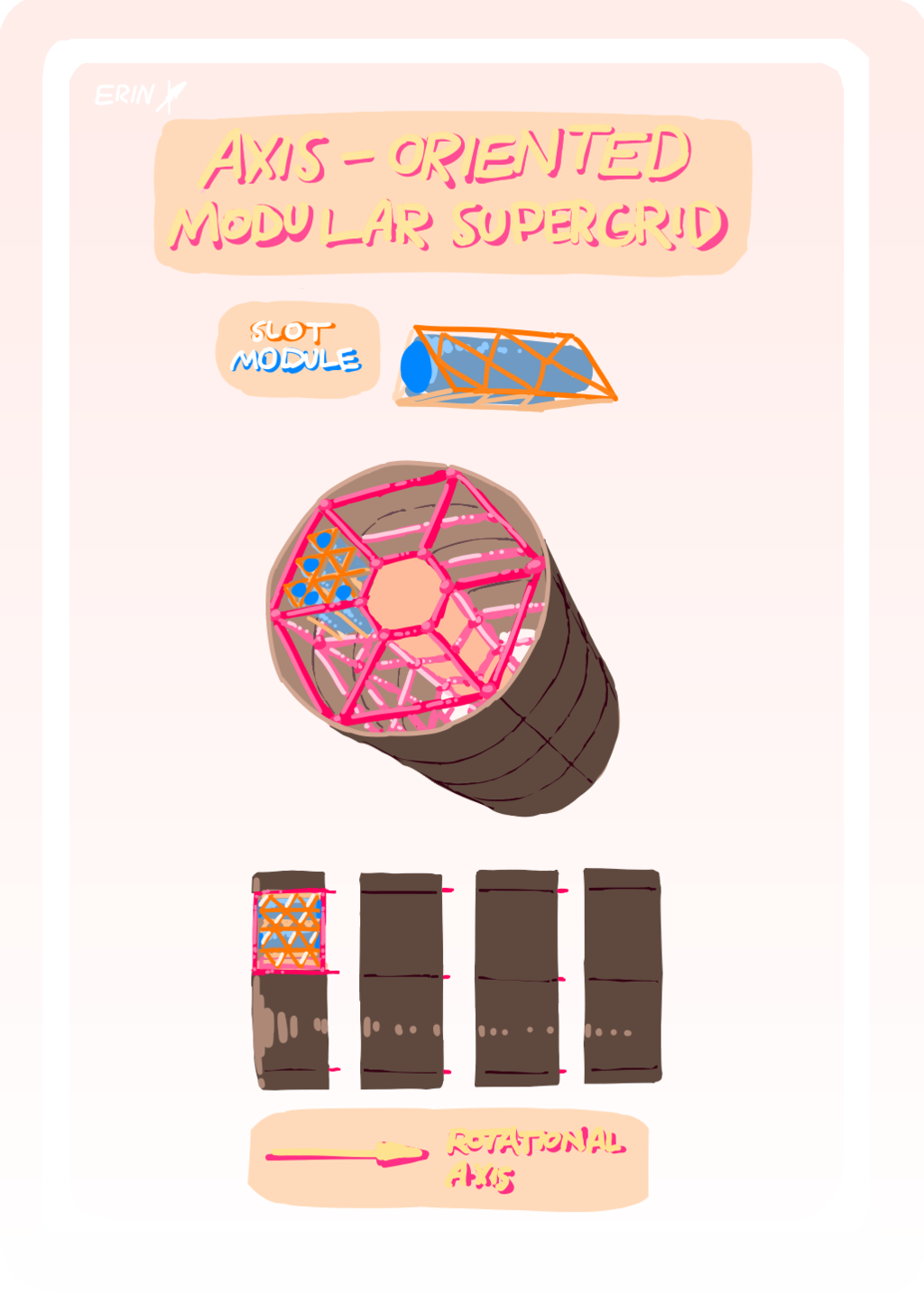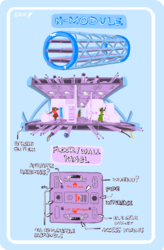Sign In
CloseOne of the major qualms I've always had with O'Neill-style space habitats in realistic SF is that they're terribly wasteful of space, and not particularly easy to make modular. Why is space-filling and modularity important? Well...
To build the outer shell of an O'Neill-class, cylindrical habitat, you're gonna need a lot of material. Even if it's sourced from some bountiful asteroid mine, it's not gonna be cheap - given a single-cylinder habitat, whoever's building the station will need to pay to keep the mine running long enough to churn out something like ten tons of material per square meter of habitable surface. For a modest space station design like the Kalpana One concept, the total mass would come out to something like 7 million tons.
Clearly such a station (especially if it's the first large habitat ever built) is not going to happen without a massive initial investment. Therefore, I've been thinking about ways to construct a huge, city-size space station piece-by-piece, out of standardized habitat-modules (thus easy to produce many of them), while it's rotating for artificial gravity. That way, a station can be constructed over a long period of time and still be habitable.
Additionally, I wanted the entire volume of the structure to be usable for habitation - not just the outer rim, or a series of nested rings. An outer shell is depicted above, but is not necessary - the framework of the station can be exposed to vacuum during construction, so long as each constituent module is properly sealed.
So:
In what I call the Axis-Oriented Modular Supergrid (AOMS) method, the city-habitat’s internal superstructure takes the shape of a giant hexagonal prism, which is divided into Layers of equal thickness. The Layers in turn are divided into equilateral-triangle prisms, known as Slots.
Each Slot can be filled by one cylindrical Neighborhood Module, which inscribes the Slot (attaches snugly to its girders). Modules (which are depicted here with an outer skin but don’t need to have this) are cylindrical steel frameworks with flat floors. Neighborhood Modules are built to uniform dimensions, which helps them to be churned out more inexpensively and with less specialized equipment.
Module floors are made of a metal grid with removable/replacable floor panels, and they have hardpoints for installing pipes, equipment, walkways, stairs, and so on. Foamed metal and other foam solids may be used to soundproof and insulate floor and wall panels.
The Modules’ cylindrical shape allows them to be rotated during installation to align with the local direction of gravity. This compensates for the uneven gravity experienced across different parts of the station’s hexagonal superstructure.
Although this seems to be one of the best ways I can think of to make use of the open volume inside an O'Neill style space station, this system still leaves a significant fraction of the space in each Slot unfilled; I'll elaborate on how to fill that space in a later installment.
The diagram shown is not necessarily to scale. The module system is meant to be resizable to fit any kind of centrifugal-gravity space station (even those without a cylindrical outer shell), from an ISS-type outfit to the O’Neill-class kilometer+ habitats. So there’s a lot of flexibility in module size.
However, I’d envision them being "huge buildings" at most - the size of a convention center/skyscraper each. They’re meant to be mass producible at roughly “human” scales, not megascale structures themselves.
Also, not all Slots need be filled by a module. I think there would be a lot of large open areas as well as columns of empty Slots, both to allow light to pass into the structure from windows (in a city-station close to the Sun) and to help enable air to circulate on large scales through the station. More on that in future installments.
Submission Information
- Views:
- 298
- Comments:
- 2
- Favorites:
- 2
- Rating:
- General
- Category:
- Visual / Digital
Comments
-
-

As I've noted, the point isn't that all slots need to be filled with a module; open spaces are meant to be freed up in various regions. It won't be Earthlike by far, but I think it has the potential to be a far more efficient use of available space while still affording people freedom to move.
And to be honest, my patience is wearing a little thin for being explained to about things I have either simply yet to describe or have already figured out and tried to describe! Just engage me in a dialogue, please.
-





Link
kishniev
This is like a Japanese coffin hotel space station. :P